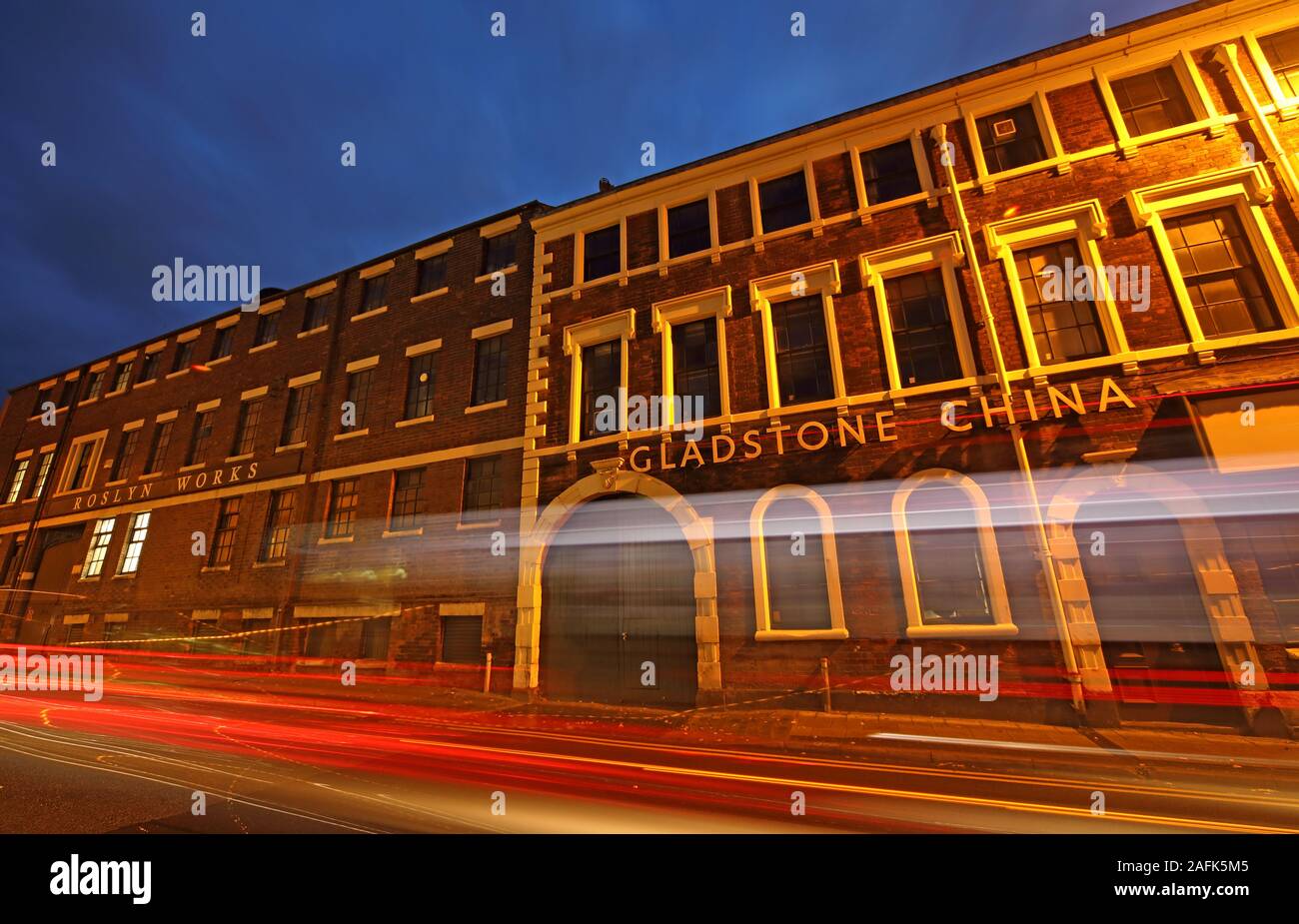Gladstone China Factory, Longton, Stoke-On-Trent, Staffordshire, West Midlands, England, UK - Uttoxeter Rd, Longton, Stoke-on-Trent ST3 1PQ

Image details
Contributor:
Tony Smith / Alamy Stock PhotoImage ID:
2AFK5M5File size:
62.5 MB (1.9 MB Compressed download)Releases:
Model - no | Property - noDo I need a release?Dimensions:
5832 x 3748 px | 49.4 x 31.7 cm | 19.4 x 12.5 inches | 300dpiDate taken:
31 October 2018Location:
Uttoxeter Rd, Longton, Stoke-on-Trent,Staffs, England, UK, ST3 1PQMore information:
The Gladstone Pottery Museum is a working museum of a medium-sized coal-fired pottery, typical of those once common in the North Staffordshire area of England from the time of the industrial revolution in the 18th century to the mid 20th century. It is a grade II* listed building.[1] The museum is located in Longton, Stoke-on-Trent, Staffordshire. It is also included in one of the regional routes of the European Route of Industrial Heritage.[2] Despite the name of the museum, it is a complex of buildings from two works, the Gladstone and the Roslyn.[3] The protected features include the kilns. As there are less than 50 surviving bottle ovens in Stoke-on-Trent (and only a scattering elsewhere in the UK), the museum's kilns along with others in the Longton conservation area represent a significant proportion of the national stock of the structures. The museum is centred on the Roslyn pottery. It contains two biscuit ovens and two larger glost ovens. In addition are two enamel kilns. A tandem compound steam engine by Marshall & Sons, of Gainsborough, Lincolnshire is in place but it is turned by an electric motor. The two muffle kilns came from elsewhere. The museum allows the visitor to explore the bottle kilns and exhibits the principal ancillary rooms: the engine house, the slip room, saggar making workshop. It shows aspects of working with clay- including hands on displays of throwing, moulding and decorating. Colour and gilding is presented as interpretive panels. There is a gallery explaining the history of the tile: how it was pressed glazed and decorated. In one tableau the "Gladstone Vase" by Frederick Alfred Rhead is displayed. There is also a gallery charting the history of sanitary ware, privies, earth closets and water closets